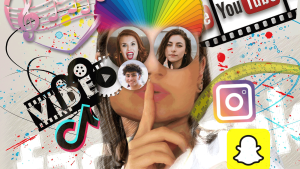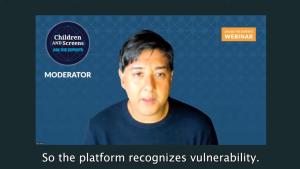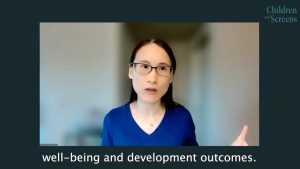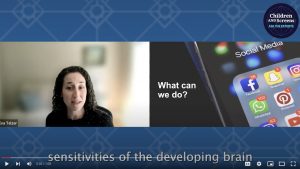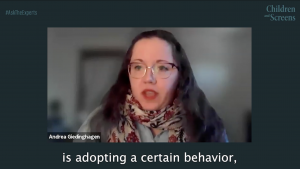
Andrea Giedinghagen, MD (Assistant Professor, Department of Psychiatry, Division of Child and Adolescent Psychiatry, Washington University in St. Louis School of Medicine), discusses how the natural desire of adolescents to belong to a group intersects with algorithmic content delivery on social media platforms to drive social contagion behaviors in #AskTheExperts webinar “Copycat: Social Contagion, Online Viral Behavior, and Youth”” on February 29, 2024.
Read the Video Transcript
[Andrea Giedinghagen] You have this ultrarapid perception of intimacy and cohessiveness in a group. Which, what human doesn’t want that, especially adolescent human, right? And so if the ticket to get in the door is adopting a certain behavior, whether that’s trying a challenge or identifying with a particular illness, that can be really alluring. There’s also the fact that as you’re looking at, you know, YouTube or TikTok, you’re going to be served on your “For You” page more things that are exactly what you have looked at. And so it can become a combination echo chamber/filter bubble where there is just this continuous reinforcement, especially of the more extreme or intense content and I’m not sure the extent to which an awareness of that might be helpful. But as part of media literacy, which should be taught in every school, by the way, letting young people know and sort of tapping into that natural adolescent rebelliousness, which I love, like, “Okay, the algorithm is feeding you this, what do you think about that?”
View the full webinar

Copycat: Social Contagion, Online Viral Behavior, and Youth
What should parents and caregivers know about vulnerability to social contagion—and how is it being supercharged by the large volume of digital content and social media algorithms?
Vicki Harrison, MSW
Program Director, Center for Youth Mental Health and Wellbeing, Department of Psychiatry and Behavioral Sciences, Stanford University School of Medicine
Andrea Giedinghagen, MD
Assistant Professor, Department of Psychiatry, Division of Child and Adolescent Psychiatry, Washington University in St. Louis School of Medicine
Thomas Niederkrotenthaler, PhD, MMSc
Professor of Public Health, Head of the Public Mental Health Research Unit, Deputy Head of the Department of Social and Preventive Medicine, Medical University of Vienna
Pamela Wisniewski, PhD
Associate Professor of Computer Science, Flowers Family Fellow in Engineering, University of Vanderbilt

